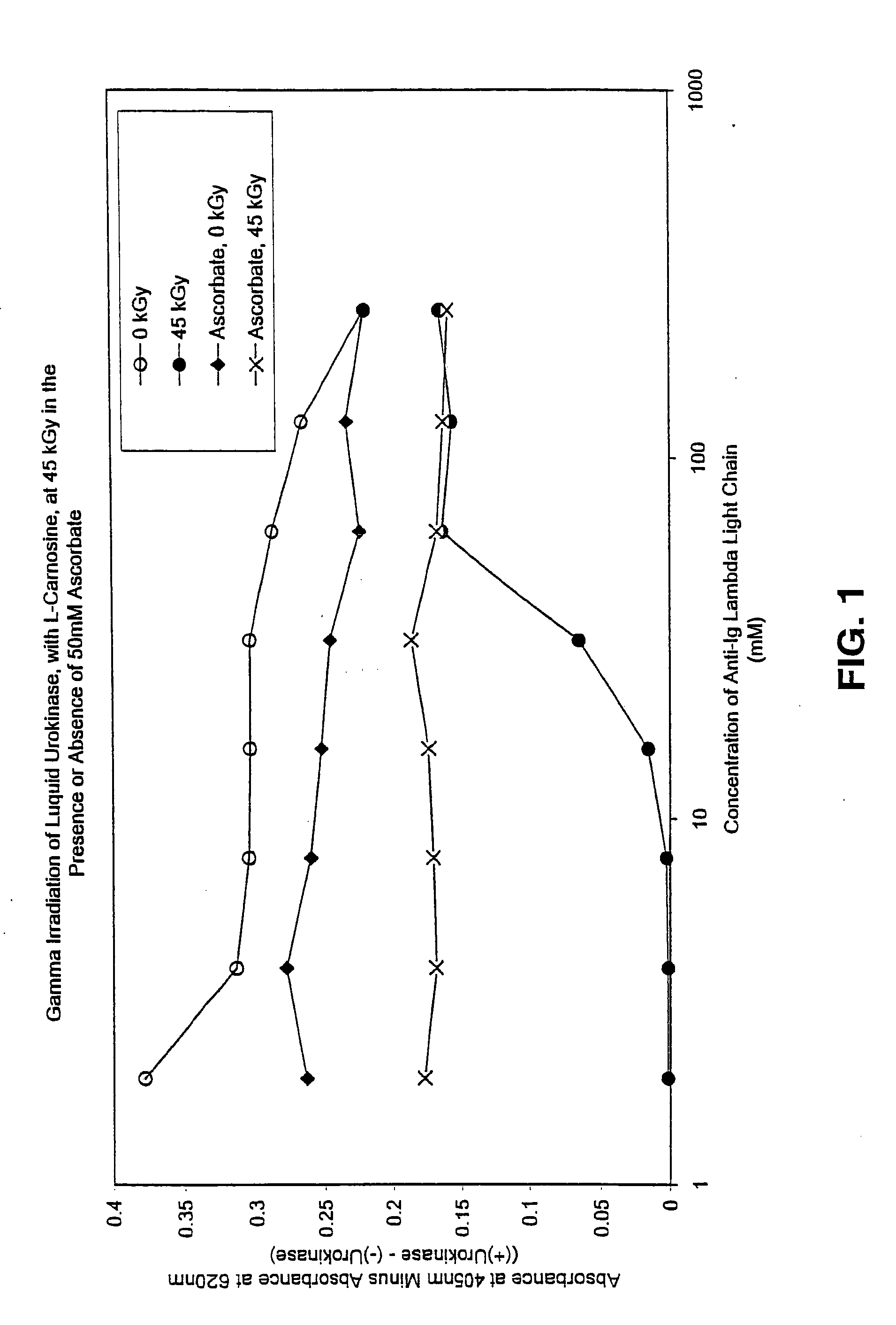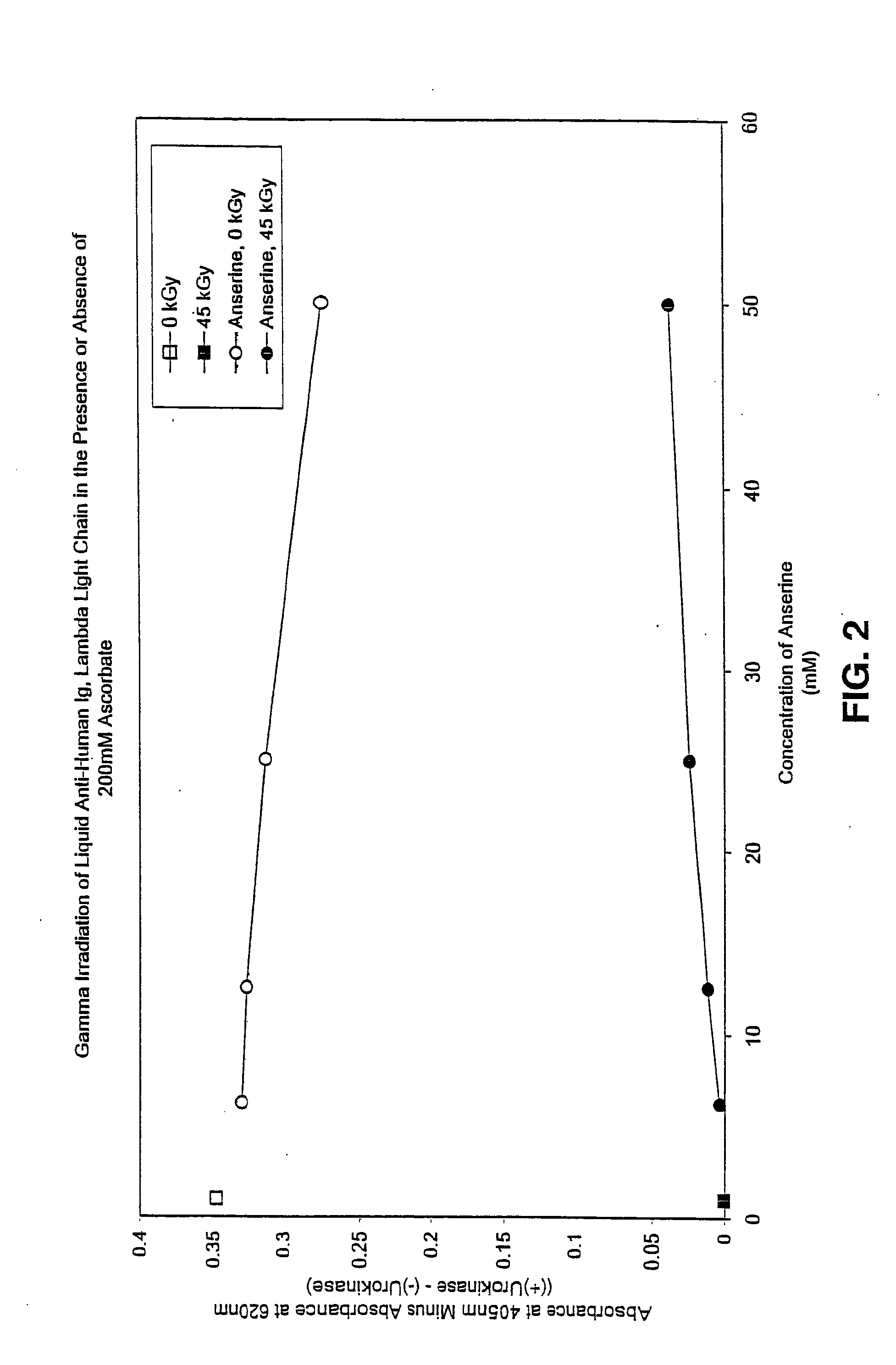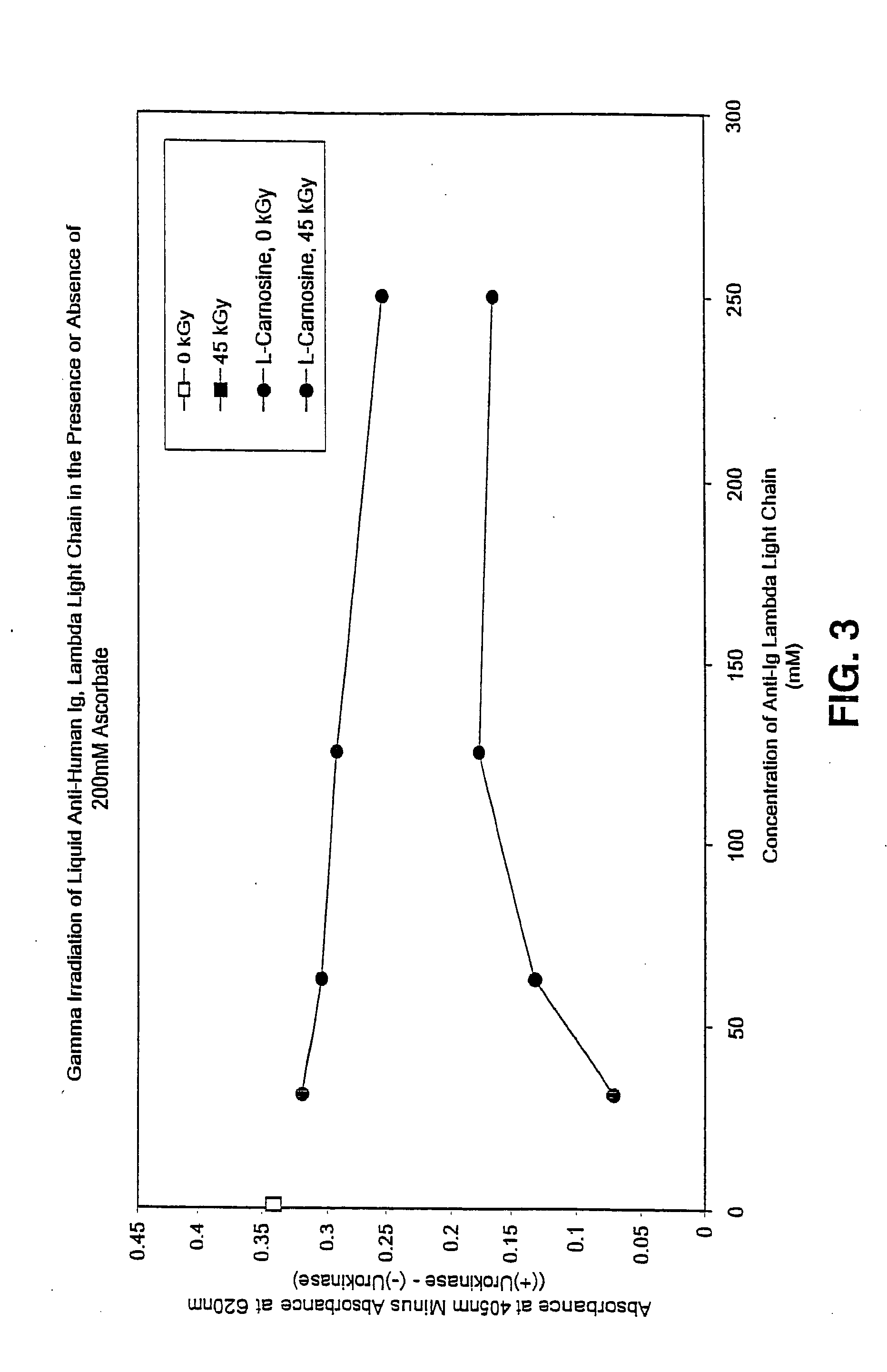Methods for sterilizing preparations of urokinase
a technology of urokinase and preparation, which is applied in the field of methods of sterilizing preparations of urokinase, can solve the problems of severe damage to brain tissue, no longer sufficient oxygen supply for tissues, and suspension of urokinase, etc., and achieve the effects of reducing the residual solvent content, reducing the temperature of the preparation of urokinase, and reducing the oxygen content of the preparation
- Summary
- Abstract
- Description
- Claims
- Application Information
AI Technical Summary
Benefits of technology
Problems solved by technology
Method used
Image
Examples
example 1
[0110] In this experiment, the effect of gamma irradiation at various doses on liquid and dry low molecular weight urokinase was evaluated.
[0111] Method
[0112] Dry or liquid (1000 IU / ml) Sigma urokinase was irradiated to a total dose of 45 kGy at a dose rate of 30 kGy / hr or 0.6 kGy / hr with gamma irradiation and then assayed for structural integrity. Following irradiation, the samples were assayed using 500 IU / ml low molecular weight urokinase (LUK) and 1500 μM CalBiochem colorimetric substrate at room temperature. Readings were taken at 5 minutes, 25 minutes and 2 hours post-incubation.
[0113] Results
[0114] OD280 of 1:10 dilution of dry samples showed less than 5% variation in protein concentration among all samples. For dry samples irradiated at 30 kGy / hr and 0.6 kGy / hr, the recovery was 91.3% and 65.3%, respectively. For liquid samples irradiated at 30 kGy / hr and 0.6 kGy / hr, the recovery was 57.9% and 48.3%, respectively.
example 2
[0115] In this experiment, the effect of Tris buffer and phosphate buffer on lyophilized LUK irradiated to a total dose of 45 kGy at a dose rate of 1.9 kGy / hr with gamma radiation was evaluated.
[0116] Method
[0117] Samples of 400 μl Sigma LUK (1,000 IU / ml, in H2O) were prepared in the presence or absence of 200 mM sodium ascorbate in 3 ml glass vials. The samples included either 35 mM phosphate buffer (pH 7.5) or Tris buffer (pH 7.6). Following lyophilization, the samples were either not irradiated or irradiated to a total dose of 45 kGy at a dose rate of 1.9 kGy / hr with gamma radiation. The samples were then reconstituted with 4001 μl ddH2O, and assayed in duplicate wells in a 96 well microtiter plate with 1500 μM CalBiochem urokinase colorimetric substrate #1 at room temperature. OD405 and OD620 were taken at 5 and 25 minute intervals after reaction.
[0118] Results
[0119] Recovery of samples irradiated to 45 kGy in the presence of sodium ascorbate and either Tris or phosphate buf...
example 3
[0120] In this experiment, the effect of gamma irradiation on liquid urokinase in the presence of varying concentrations of sodium ascorbate was evaluated.
[0121] Method
[0122] Samples of Sigma urokinase (50 μL at 1000 IU / ml) in the presence of varying concentrations of ascorbate (0 to 1000 mM) were irradiated to a total dose of either 0 or 45 kGy with gamma radiation. Irradiation was carried out at 4° C. at a dose rate of about 1.8 kGy / hr. Urokinase colorimetric substrate I was then added to each well to a final concentration of 500 μM (i.e., 50 μL of 1000 μM stock in 2× Assay buffer). Absorbance at 405 to 620 nm was measured every 30 minutes for an hour (beginning at 5 minutes).
[0123] Results
[0124] Approximately 80% of the liquid urokinase activity was recovered for samples irradiated to 45 kGy in the presence of at least about 120 mM ascorbate. Increasing the ascorbate concentration above about 300 mM resulted in increased absorbance at 405-620 nm for both the 0 and 45 kGy samp...
PUM
| Property | Measurement | Unit |
|---|---|---|
| temperature | aaaaa | aaaaa |
| temperature | aaaaa | aaaaa |
| temperature | aaaaa | aaaaa |
Abstract
Description
Claims
Application Information
 Login to View More
Login to View More - R&D
- Intellectual Property
- Life Sciences
- Materials
- Tech Scout
- Unparalleled Data Quality
- Higher Quality Content
- 60% Fewer Hallucinations
Browse by: Latest US Patents, China's latest patents, Technical Efficacy Thesaurus, Application Domain, Technology Topic, Popular Technical Reports.
© 2025 PatSnap. All rights reserved.Legal|Privacy policy|Modern Slavery Act Transparency Statement|Sitemap|About US| Contact US: help@patsnap.com



